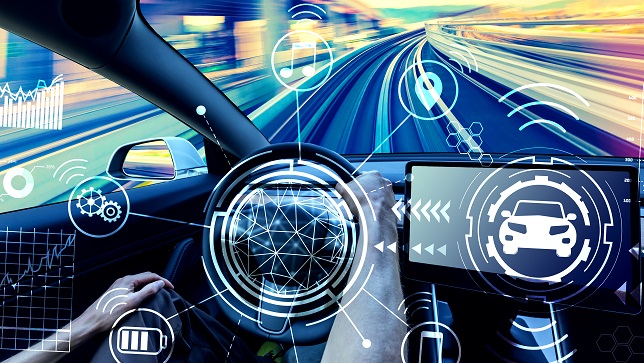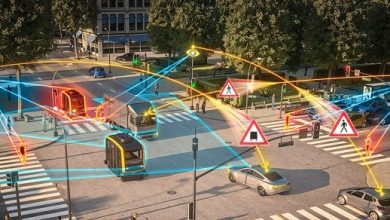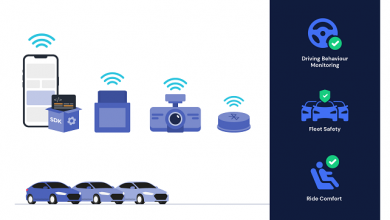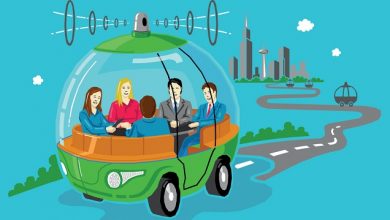Mobility: Shared yet Personalized

Everyday a lot of people travel in the same route at the same time with the cars carrying an average of only 1.5 persons per car especially in U.S. and Europe. Wouldn’t it be great if we could connect the people who are travelling in the same route at the same time and let them share the vehicle to reduce individual’s travel cost, to reduce traffic and to reduce greenhouse gas emission? This is enabled by shared mobility providers. The shared mobility market is expected to exceed $1.9 trillion revenue by 2030 [1]. Shared mobility has various modes like car sharing, ride sharing, ride hailing, peer-to-peer car & ride sharing, shared micromobility and robotaxi. Car sharing is a derivation of classical rental cars where consumers can use the car for shorter time period. Ride sharing is used when consumers on the same route share the same vehicle. Ride hailing having the biggest market size among the other shared mobility mode is used when consumer calls on demand a driver who will pick up and drop the consumer at their destination. Peer-to-peer car & ride sharing are used when private car owners allow other drivers to use their car or share the ride with other passengers. Shared micromobility covers light vehicles like scooters, bikes, bicycles used for short distances mainly for first and last mile. Robotaxis are autonomous taxis that are operated through ride hailing services. Overarching various shared mobility modes is Mobility as a Service (MaaS) which integrates various forms of transport into a single comprehensive mobility service that is accessible on demand.
Shared mobility and personalization are megatrends and when combined offer consumers cost-effective eco-friendly personalized mobility. It leads to increased accessibility, convenience, and comfort for the consumers. Today private car ownership remains the popular choice for most of the consumers. Soon shared mobility will redefine the car ownership. What if we can personalize shared mobility to give a higher sense of ownership. Imagine Rosy, a consumer opens a mobility app on her smartphone, enters the start address (preselected as current address), destination address (lists the recent visits), departure time and number of occupants. Then the app lists various shared mobility services along with the cost and travel time. Suiting her needs, she chooses the option of robotaxi in combination with bike sharing. Robotaxi arrives at her doorstep with its windscreen displaying ‘Welcome Rosy’. Rosy opens the car via mobility app and the intelligent personal assistant in the car greets her. The interior space is changed to her favorite theme, seat & climate control adjusted to her preference and a song from her playlist is played in the car stereo system. Her personalized content is ready in the in-car display with media, calendar, apps synced to the car. Intelligent personal assistant in the car reminds her about a meeting in her calendar and asks if she would like to attend the meeting in the in-car display. She joins the video conference from the in-car display and audio system. In-car health monitoring system has scanned her health vitals and as the robotaxi drops her at the e-bike station, the intelligent personal assistant recommends her to walk the last mile. Intelligent personal assistant wishes her a good day and immediately restores her personal data on cloud and deletes the personal data from the car. She hops on to the e-bike that navigates her in the vehicle restricted area to her office. With this example it is apparent that we can enjoy the convenience, comfort and even individuality with shared mobility. Consumers can also customize the vehicle for their needs specifying the vehicle of their choice, adding accessories, and subscribing functions on-demand. For the good drivers, they could have Pay How You Drive usage-based insurance at lower rates to gain advantage of their good driving skills. Consumer can also enjoy the loyalty or bonus programs that incentivize their shared mobility journey based on their use. Although it is challenging to have all the personalization features enabled when we share the vehicle with strangers, we do have features like privacy displays, intelligent personal assistant and mixed reality kit that allow one to enjoy one’s limited personal space in the shared vehicle. With privacy displays the personalized content displayed in the in-car display is visible only to the corresponding consumer. Intelligent personal assistant takes care that the messages are not read out loud when it detects strangers as occupants. Mixed reality kit provides consumer’s an immersive entertainment experience in their metaverse being in the car. For shared mobility to be effective vehicle needs to be connected, electrified, and automated. Shared personalized mobility would not be possible without Artificial Intelligence, Cloud computing and IoT.
Shared personalized mobility is attained if consumer information and preferences can follow along with them during their travel across various shared mobility modes. Combining the vehicle data, mobile data and personal data, the shared mobility providers can take the mobility experience to the next level by delivering tailored services to consumers. The question remains “Is the personal data of the consumer safe?”. General Data Protection Regulation (GDPR) enforces data protection and privacy in European Union and European Economic Area. SAE’s Mobility Data Collaborative program establishes a framework for mobility data sharing. SAE also provides Mobility Data Sharing Assessment (MDSA) to guide and review mobility data sharing to ensure data privacy. Mobility Data Specification (MDS) clearly separates out vehicle data from personal data. In addition, mobility providers are striving for security and privacy by design. Mobility providers implement differential privacy and collect data while maintaining anonymity of the individual. Few mobility providers are also looking into securing data using blockchain. Many consumers are still hesitant to share their personal data with mobility providers. However, it is not that far when people will share their personal data with the right tradeoff with data utility in exchange of value it brings.
Currently the shared mobility market is conquered by mobility service providers like Uber, Lyft, Grab, Didi, BlaBlaCar, Lime, Neuron, etc. The automotive OEMs are also setting their foot in this space Stellantis with Free2Move, Mercedes-Benz and BMW with ShareNow (since 2022 a subsidiary of Free2Move), Audi with Audi on demand, VW with Moia, Volvo with Volvo On Demand, Toyota with Kinto, Renault with Zity, etc. OEMs do not favor shared mobility as this will result in decline of global car sales. Nevertheless, if OEMs focus on data monetization and services the additional revenue will suffice the decline of global car sales. Mobility as a service can offer seamless intermodal travel if we integrate various fragmented shared mobility modes. Collaboration across private and public sectors and industries are key for providing an end-to-end user experience to the consumer and providing a sustainable mobility. European Union has formed the MaaS Alliance for working together on mobility as a service. International NGOs worked together to define the shared mobility principles. NUMO, the New Urban Mobility Alliance works on deploying shared mobility principles. Governments can encourage shared mobility usage by disincentivize private car ownership and having policies in place to increase the safety and security of shared mobility users. An intermediate step before consumers move from mobility owners to mobility on-demand users might be mobility subscribers. Car subscription is available from Sixt, Enterprise, Porsche Drive, Hertz, Finn, Invers, etc. Most of the consumers will opt for on demand shared mobility in the coming years as this will be more economical in comparison to total cost of ownership of private car, flexible & convenient because of the multi-modal options shared mobility offers and eco-friendly by reducing number of vehicles thereby reducing greenhouse gas emission and reducing traffic congestion. Shared personalized mobility will alter many car owners today to car users tomorrow. Nonetheless giving up vehicle ownership does not mean giving up personalized mobility.
References:
Author:

Rosemary Joshy
Head of Global SW Strategy, Innovation and Business Improvement
Continental Automotive Technologies GmbH
Rosemary Joshy is the Head of Global SW Strategy, Innovation and Business Improvement for Continental Business Area User Experience. In this role, she spearheads the software strategy, innovation and business improvements across all locations, product portfolio and customers. During her career she has worked with major automotive Tier 1s through the entire spectra of software spanning from Software engineer to Head of Software Development Center.
Published in Telematics Wire





